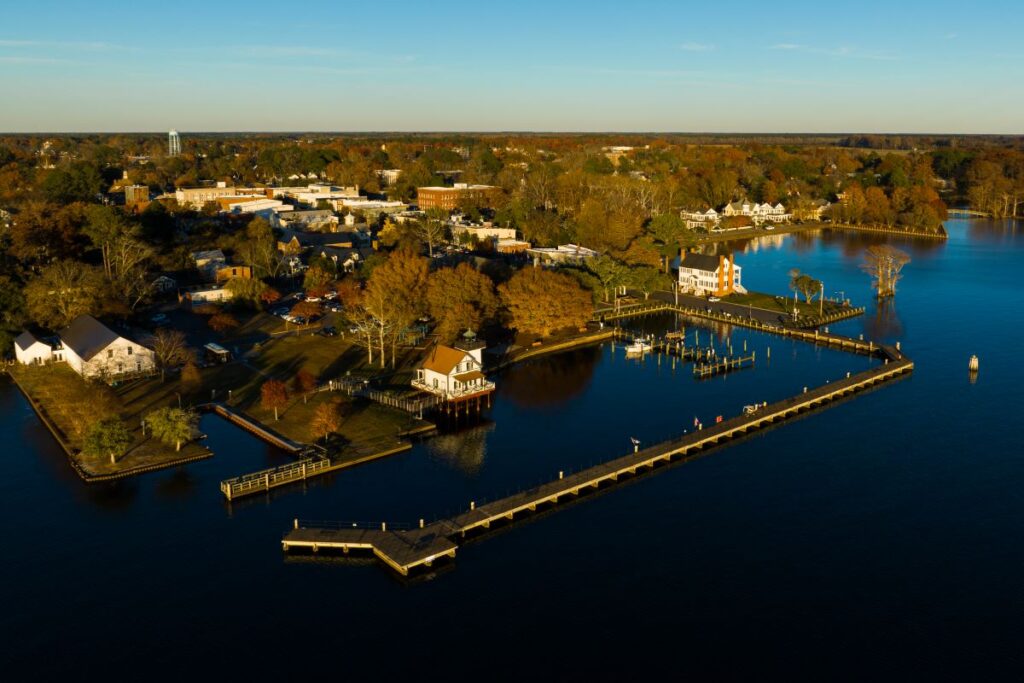
With a picturesque waterfront, elegant historic district, and reputation for hospitality, the North Carolina town of Edenton is often lauded as a hidden gem, revered by in-the-know lovers of eighteenth- and nineteenth-century architecture—among them, the editors of ANTIQUES, which highlighted the town in the June 1979 issue—yet it is not widely known beyond the state’s borders. That obscurity, though, is changing, as a surge of new young residents, economic investment, and thoughtful tourism is putting the Albemarle Sound destination quite literally on the map.
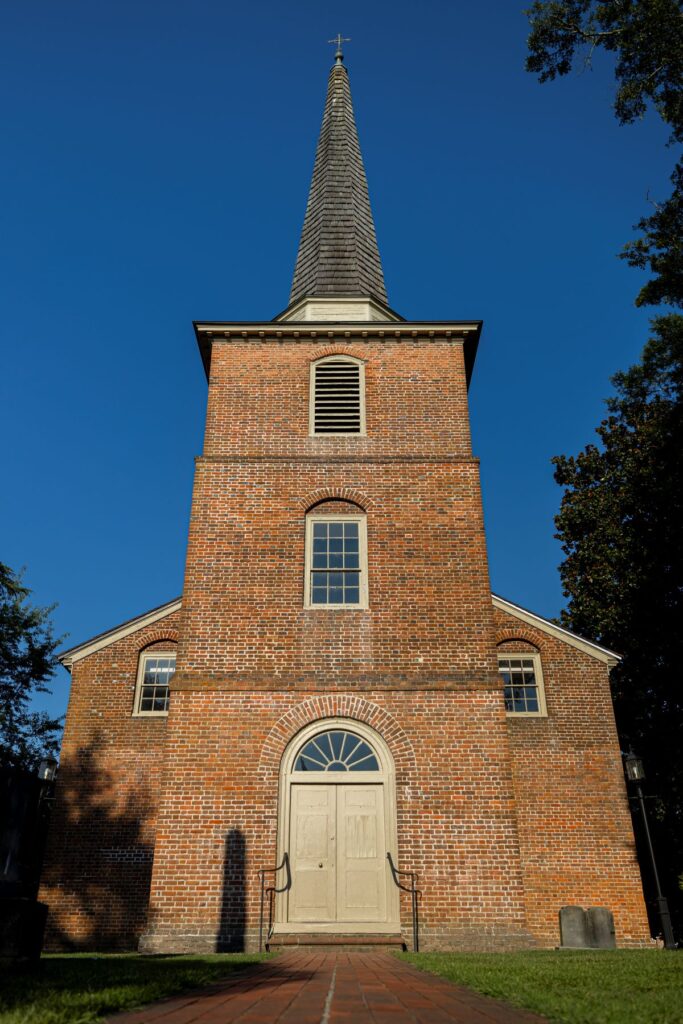
not completed until 1774.
Established in 1712 as North Carolina’s colonial capital, Edenton offers a captivating collection of distinguished buildings, among them St. Paul’s Episcopal Church, the Chowan County Courthouse, and the Penelope Barker House. According to Sam Dixon, native son and board member of the National Trust for Historic Preservation, “Edenton is a special place because of historic preservation—which is something of a local specialty since the Cupola House Association was established in 1918, two years before Charleston’s Preservation Society.” Dixon and wife, Gray, also happen to be the latest custodians of Beverly Hall, which was constructed in 1810 and acquired by his family in 1855.
“Edenton’s architecture is quiet at first glance but it has such powerful details,” says Manhattan-based interior designer Tham Kannalikham, known for her recent work at the White House. Not long ago, on behalf of North Carolina clients who have purchased a late eighteenth-century house near Wilmington, she went on a research trip to Edenton, to study its aesthetics and explore legendary properties such as Cupola House, Hayes Plantation, and nearby Hope Plantation. “I wanted to understand the state’s most authentic architectural vocabulary, and Edenton was the best place for me to study. So little has changed.”
Thanks to a transformative investment made in 2021 by the State of North Carolina, Edenton is in the process of saving Kadesh AME Zion Church (1897), a carpenter Gothic masterpiece that was almost destroyed by Hurricane Isabel in 2003. A second grant is also supporting the efforts to restore Hayes, the home of Samuel Johnston (1733–1816), a North Carolina governor who was also its first United States Senator. The lively Instagram feed @elizabeth_v_moore_foundation_ is just one vehicle that explores the rebirth of this nearly two-hundred–acre property on the outskirts of Edenton. The final part of the grant will fulfill Edenton’s dream of collaborating with the Brooklyn Museum to reinstall the Cupola House’s original 1750s first-floor woodwork. Sold off in 1918, a tragedy that shocked the community, the venerable paneling has been among the New York institution’s celebrated period rooms, some of which are being deaccessioned.
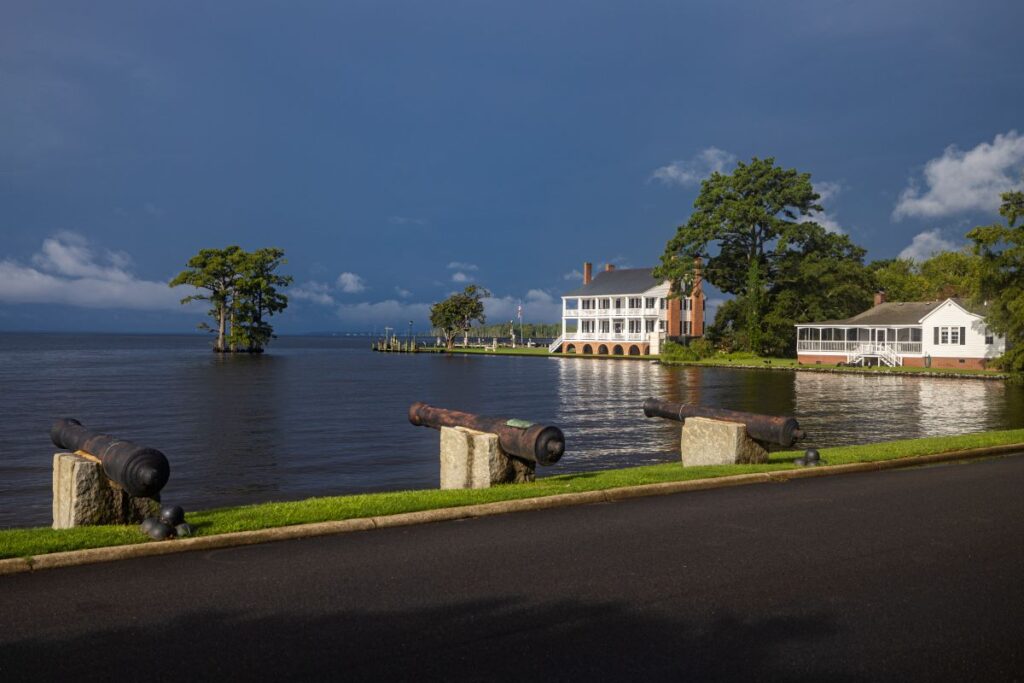
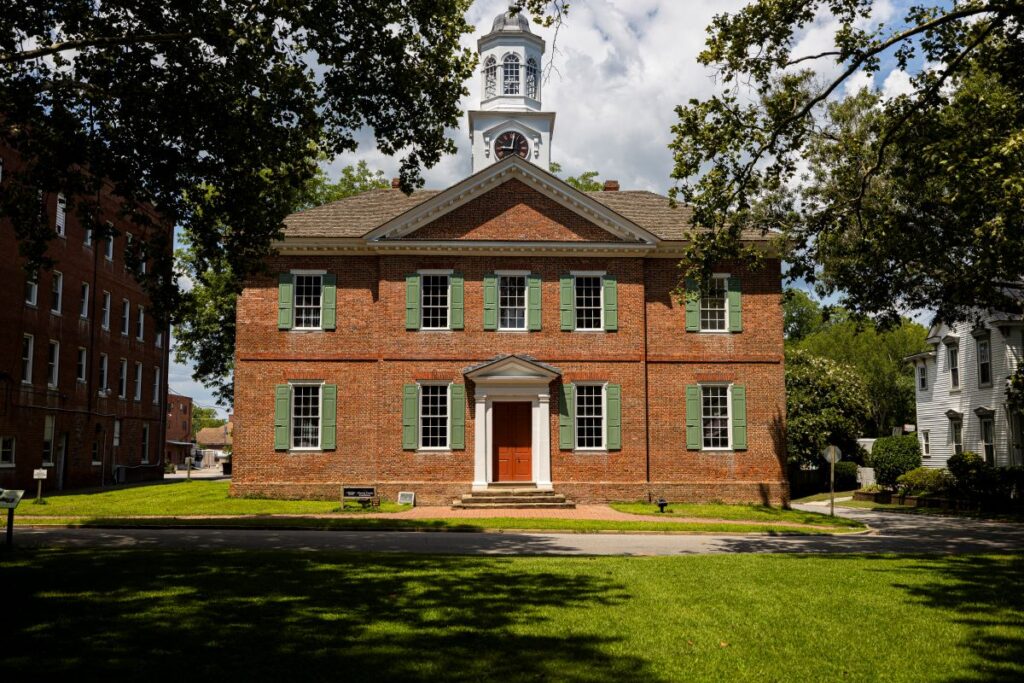
“It’s a preservation miracle,” Dixon says of the return of the woodwork, which will be reinstalled at the Cupola House next year after extensive conservation. In 2022 Edenton recruited Robert Leath, formerly of Historic Charleston Foundation, Colonial Williamsburg, MESDA, and the Classical American Homes Preservation Trust, to relocate to Edenton to coordinate the Cupola House efforts.
While the Dixon family has generational roots in the area, their next-door neighbors represent a new chapter in the Edenton narrative. As chief operating officer of Fybe, the region’s fastest growing internet service provider, Bo Coughlin saw an opportunity to not only make Edenton his family’s home, but to invest in the local economy and workforce. “Two years ago,” he says, “my family and I began a thorough search of northeastern North Carolina for the perfect place to expand our fiber broadband service, and after just one afternoon, we knew we had found the town we had always dreamed of.” They soon acquired Wessington (1851), a four-story brick house with a two-story columned front porch and elaborate cast-iron balconies and railings.
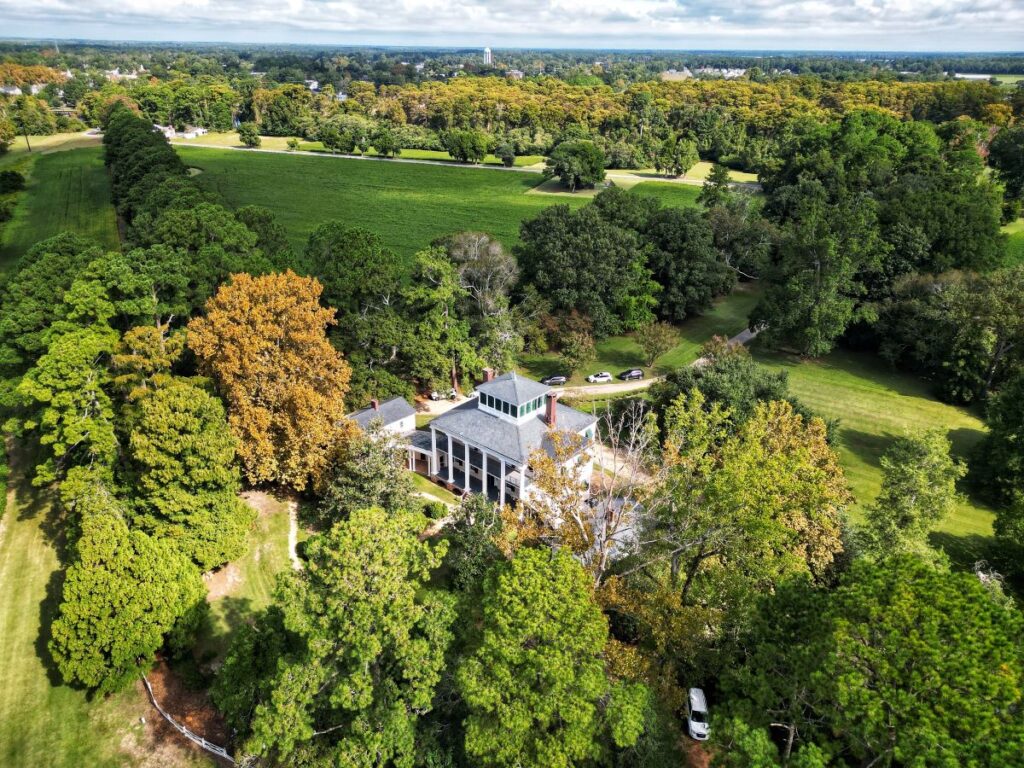
While Fybe has transformed North Carolina’s first colonial capital into its first gigabyte-ready small town, Stephanie Wach and her husband, Joe, are revitalizing Edenton’s downtown. “It took fifteen minutes for us to fall in love with this place,” she says. “It wasn’t just the amazing history or the incredible architecture, or the beautiful waterfront—it was the people who made us feel that we belonged here.”
Since moving to Edenton from Colorado in 2020, the Wachs have restored the William Littlejohn House (c. 1790) and renovated two historic downtown commercial structures. They are now in the process of opening a fine-dining establishment, Carriage, next door to the Taylor Theater (1925).
“Preserving historic buildings is the most sustainable form of development, and in Edenton, we’ve demonstrated that it’s also beneficial for business,” says Ches Chesson, director of Destination Downtown Edenton. The thirty-four-year-old native returned recently with his young family after completing an MBA at UNC-Chapel Hill and eleven years of service as a Navy helicopter pilot.
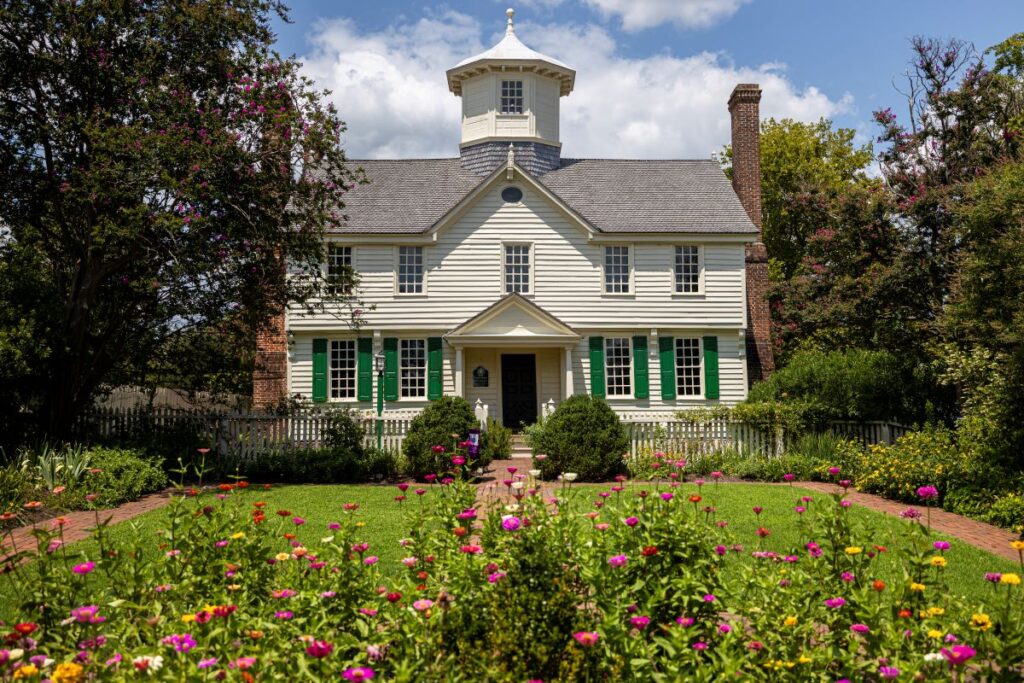
This union of historic preservation and entrepreneurship has fostered a thriving downtown with a mixture of locally owned boutiques, restaurants, two bakeries, a coffee shop, specialty stores, an old-fashioned movie theater, and Byrum Hardware, one of the oldest continually operated hardware stores in North Carolina.
To prevent Edenton from growing too rapidly and losing its appeal, local officials have looked to lessons learned in larger places, such as Charleston, and are now working on a thoughtful plan that can accommodate an influx of visitors while preserving the historic district’s singular charm and promoting a high quality of life for residents, maximizing the town’s natural and historic resources. Says Wach, “Edenton is like a dream, or a movie set.” And also, it seems, a potential template for similar communities where architecture from the past can provide a springboard for a fine future.

